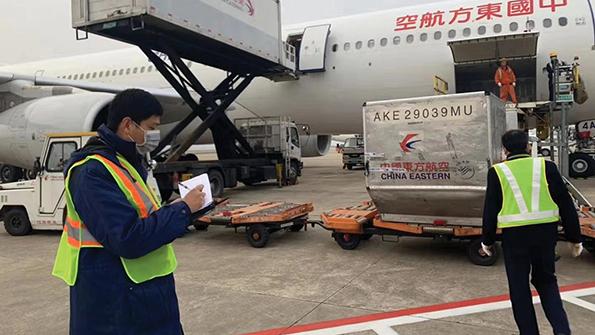
Mergers and capacity reductions among Chinese airlines may result from the COVID-19 virus epidemic, as the Civil Aviation Administration of China (CAAC) says it supports reorganization of the industry as part of its response to the crisis. The agency said on Feb. 12 it is also asking departments to provide additional relief for the industry in paying charges and taxes.
Passenger traffic for mainland Chinese airlines since Lunar New Year’s Day (Jan. 25) has been 70% lower than the corresponding holiday period in 2019, the CAAC says, adding that the average load factor has been lower than 45%. Nonetheless, this understates the immediate situation. The mainland Chinese carriers planned on Feb. 13 to operate only 29% of their scheduled flights, according to local consultancy VariFlight. A few days earlier, activity appeared to have stabilized at about a third of the schedule.
- Traffic gets modest boost as some Chinese return to work
- Carriers are maintaining links with global hubs
On various days in the first week of February, four carriers did not fly at all: Air Travel, Fuzhou Airlines, Genghis Khan Airlines and Grand China Air. All are now back in the air, however.
Listing the steps it is taking, the CAAC says: “We are supporting reorganization by combination, with optimization of capacity, according to the needs of aviation enterprises. We will help enterprises get through this crisis.”
At the end of 2018, China had 51 passenger airlines, according to an official count issued in May 2019. No new ones have been licensed since then. There are so many not because, as elsewhere, they include a profusion of little regional airlines—in fact, China has just one—but mainly because so many cities and provinces have sponsored the establishment of local mainline carriers. These operate standard six-abreast narrowbody airliners.
The CAAC has long been dissatisfied with the multiplicity of airlines, which undermines profitability with high competition and could jeopardize safety by spreading the limited number of experienced managers among too many company teams. The agency has more or less refused to license new mainline passenger carriers for the past four years. Losses amid the epidemic must be bleeding industry capital, another matter that the CAAC regards as critical to maintaining safety.
For immediate relief, the CAAC has suspended a charge of a few dollars per passenger that airlines pay into an aviation infrastructure fund. Commercial aviation is also among the industries that have been given a little tax relief as a result of the virus outbreak. And flights run specifically as part of the government’s efforts to combat the epidemic—for example, by delivering urgent supplies—are exempt from charges such as landing fees.
“The CAAC will continue to seek fiscal policies from other government departments to support aviation enterprises in relation to controlling the epidemic,” the agency says, giving no details. Carriers are not publicly complaining about losses or asking for government help; doing so during a national crisis would be politically incorrect.
One factor helping the industry must be a drift back to work by people who were in their hometowns celebrating the Lunar New Year when the epidemic became an acknowledged emergency in the last 10 days of January. However, the boost in traffic is modest compared with the usual surge of travelers at the end of the holiday.
For example, Shanghai’s two airports, Pudong and Hongqiao, handled 130,000 and 70,000 passengers, respectively, on the peak day at the end of the 2019 Lunar New Year holiday. This year, Feb. 9 should have been the peak, yet Pudong and Hongqiao handled only 48,000 and 27,000 passengers, respectively. Still, the two airports’ Feb. 9 total passenger volume was up 45% on the average traffic flows measured over the three previous days, indicating some back-to-work traffic.
As foreign airlines have suspended flights in response to a lack of demand, China has told its airlines to keep international links open—at least minimally. They are flying even when no seats have been sold, according to a well-placed industry source.
The country still has 710 international air routes that are open—operated by 77 Chinese and foreign airlines—the CAAC says, giving no comparative pre-epidemic figures. Tellingly, the agency adds that there are only 2,610 international flights a week, meaning the average route is being served about once every two days. And 29% of international flights are by freighters.
The agency stresses that China is still connected to major international hubs, such as Frankfurt, London, Los Angeles, New York, Paris and Tokyo.
—Research by Ryan Wang


